After a long sunny week, I had an excuse to spend a day on the Isle of Wight; hiking, and of course, nerding out with radios.
We took the 10am ferry from Lymington to Yarmouth, and from there I set out south along the path by the mudflats of the Yar estuary.
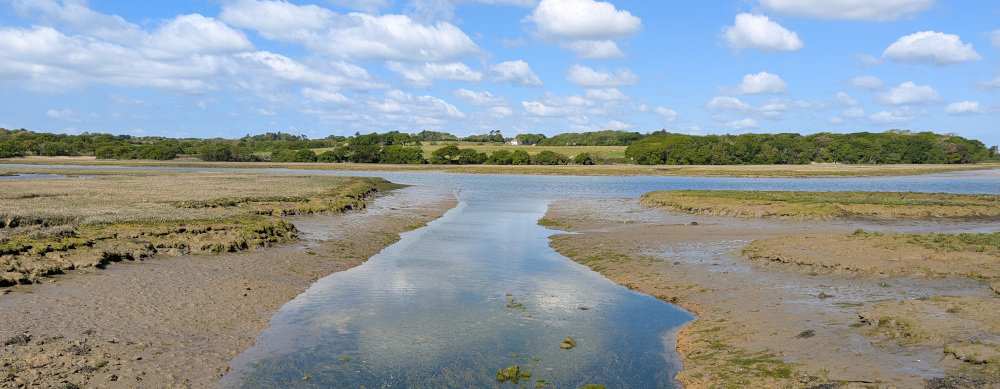 The Yar estuary at low tide
The Yar estuary at low tide
I had three POTA activations in mind for the day, the first being a two-fer and also counting for WWFF. The Isle of Wight Downs and Isle of Wight National Landscape (GB-0116, GB-0234, GFF-0287) are an expansive area of the island, so I picked one of the spots I was most familiar with: Tennyson Down. Named after the poet who used to walk there for inspiration, this long hill occupies the far south-west coast of the island from the Needles to Freshwater Bay. That meant to start with, I’d be hiking the three miles down to the bay.
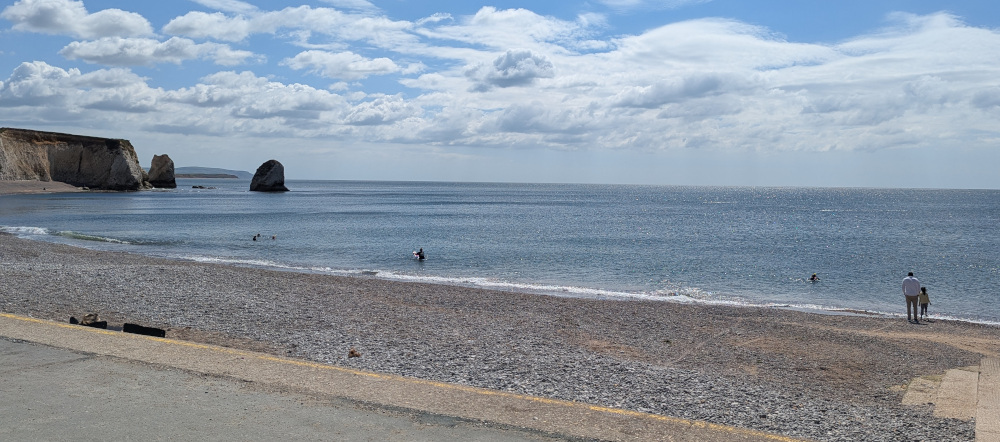 Freshwater Bay
Freshwater Bay
From there, I turned westward up onto the down. Compared to some previous adventures this was a relaxing climb, though it does seem to go on for a very long time. The view is just as good as you expect, though.
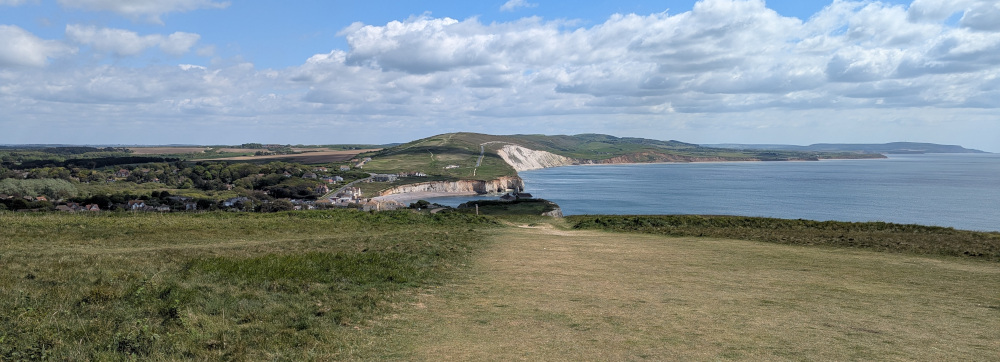 View from Tennyson Down towards Freshwater Bay
View from Tennyson Down towards Freshwater Bay
I didn’t head all the way up to the monument, instead stopping on the peak of the hill just before you get there.
The first bits of kit off the pack were for VHF. I had hoped, with it being an RSGB 144MHz Backpackers contest day, that there would be some activity around. Unfortunately I have no rig for 2m SSB which seems to be where the contesting action is, so I was restricted to FM only.
I did bring my Quansheng K6 which allegedly has SSB receive capability, but I wasn’t able to find any contesting in progress with it. Unfortunately the Quansheng really struggled with SSB, and to be honest even FM—it seemed quite noisy up there on VHF, and the cheap radio was getting overloaded too easily.
I swapped to my more reliable Yaesu FT-60, but it seemed no contest activity was to be had on FM. Over another half hour I put some calls out on contest frequencies, on the main calling channel, and also tried a spot on the POTA website while calling on a different channel, but during the whole time netted a total of one QSO. Thanks to Richard M7RWB for taking my call and proving that at least the radio did work!
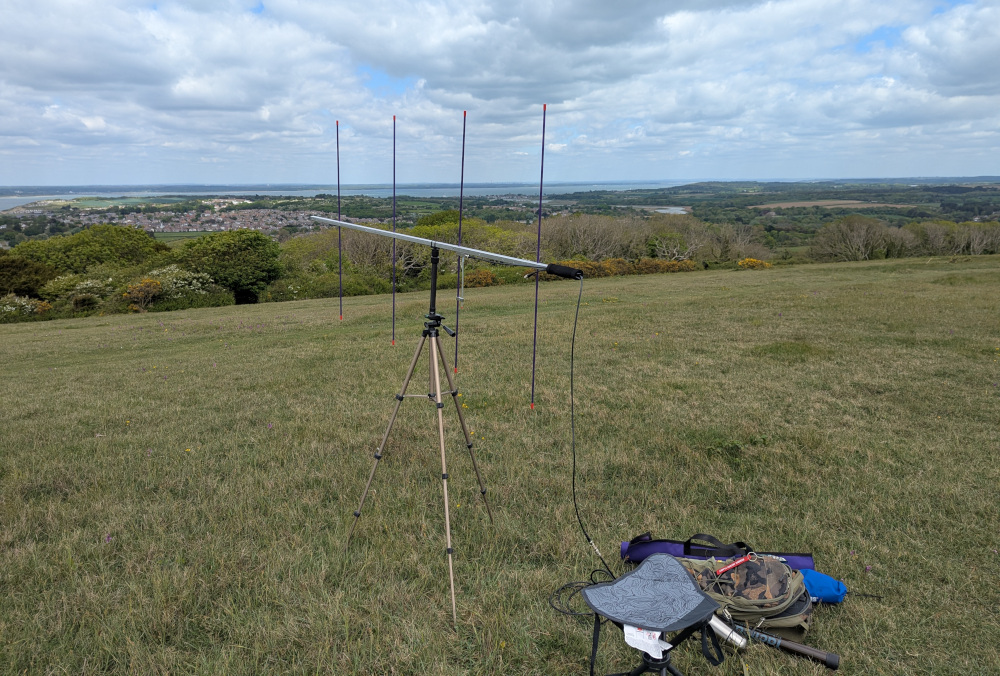 VHF operating station on Tennyson Down
VHF operating station on Tennyson Down
On the plus side, the view was good, and I was learning about my equipment. The tripod mount I had fashioned for the Arrow Yagi antenna was functional, but it did make the unit very top-heavy, and I nearly lost it a couple of times in the wind. It was easy to rotate as I had hoped, but almost too easy, as the force from the coax made it hard to keep it pointed in the direction I wanted unless I also moved around with it.
Time was ticking on, so I gave up on VHF for the day. (I’ve just turned 40 years old, so I think it’s high time I embrace being an old man and start complaining that no-one is ever on 2m any more.)
The fallback was, of course, HF, but here I would be testing out new equipment too. I’d planned to take my normal radio bag with the FT-891 and 20Ah battery, but when combined with the VHF kit and all the other requirements of a day’s hiking, my pack weighed in at just over 15kg—far too much for an enjoyable day out. I ditched that and brought my X6100 instead, and with a few more optimisations, it brought the pack down to just under 8kg. However, I’d barely had one outing with the X6100, and never had an SSB QSO on it, so it was a bit of a gamble.
Luckily, it paid off. Aside from some trouble finding a good level of mic gain and finding the screen brightness control (short-press the lock button!) I managed to get the park activated. 10W was doing surprisingly well for me on the 40m band, with a couple of 59+ reports received.
However, time was ticking on. It was past 2pm, and I had two other parks to hit up on the way back to Yarmouth.
From Tennyson Down, I picked a path which dropped down steeply through the woods towards Freshwater town, then picked my way though various footpaths and country roads until I reached Golden Hill Fort Country Park (GB-1732).
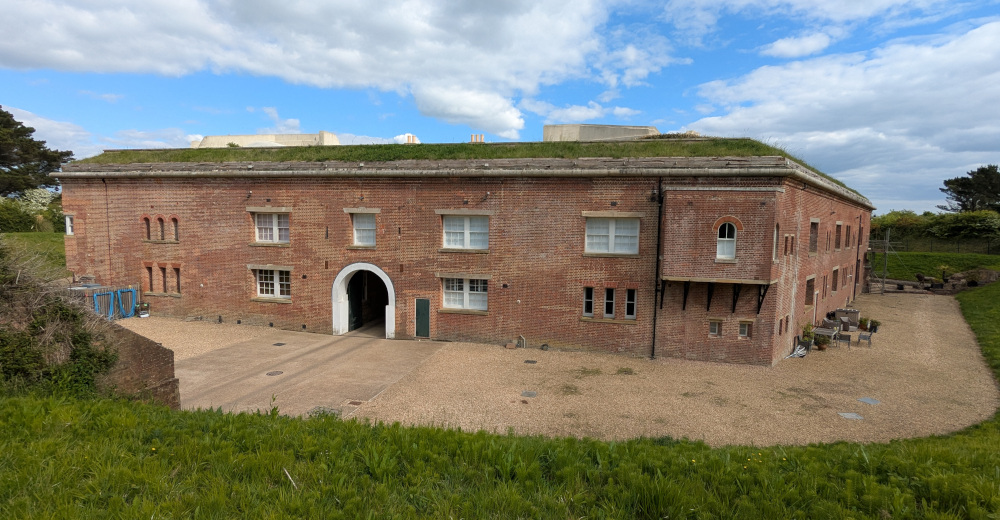 Golden Hill Fort
Golden Hill Fort
Sadly, the fort itself has been converted into fancy-looking private residences, so it’s not open to the public. However, the surrounding country park features plenty of open space for antennas, as well as the surviving foundations of a number of outbuildings constructed when the fort was used for military training during World War I.
I spent a bit more time here, trying out the X6100 to see if I could find a decent mic gain level and improve any other settings. 24 was my total in the log, including five park-to-parks, a mobile station and a club station. But by the time 4:15pm came, the ferry schedule was on my mind, and it was time to pack up again.
I headed north, back towards the coast and the final stop of the day: Fort Victoria (GB-1731).
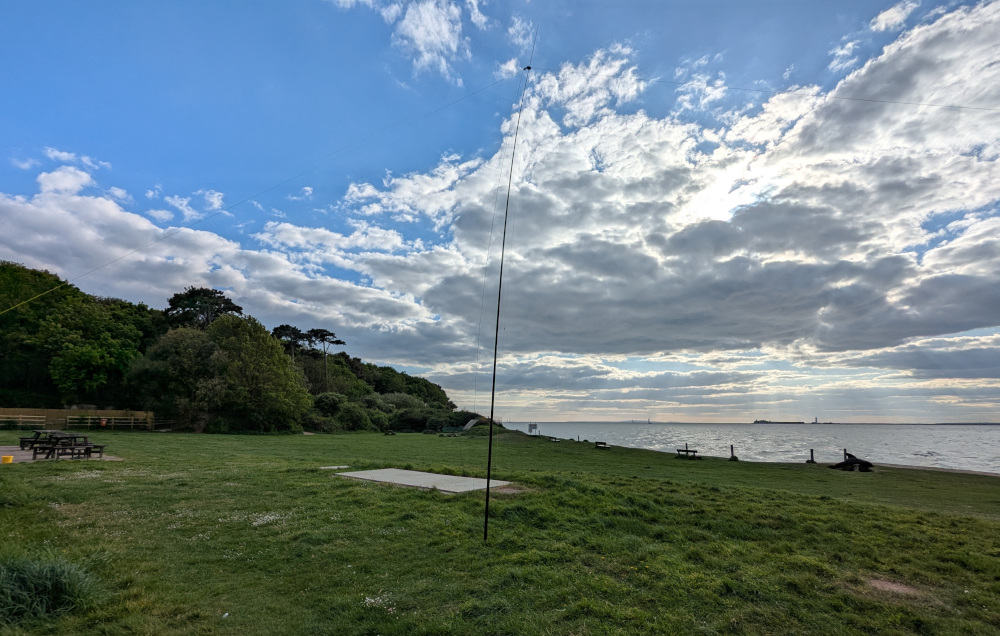 Operating station at Fort Victoria
Operating station at Fort Victoria
This Victorian fort is still to some extent open to the public, though its various rooms have largely been converted to other uses to attract a few more tourists. But of course, by the time I arrived at gone 5pm on a Sunday afternoon, nothing was open.
Don’t be fooled by the sunshine breaking through the clouds in that photo—there wasn’t a lot of sun around by the time I reached Fort Victoria. The wind had picked up to around a force six, howling around the sides of the fort. The windchill temperature was dropping like a stone, and the clanging bell of the Sconce buoy was constant in the background throughout the brief activation.
After half an hour of fighting for space on a crowded 40m band, and 12 QSOs in the log, I was done. Antenna packed away, jumper on, and just the half hour walk back to Yarmouth to go.
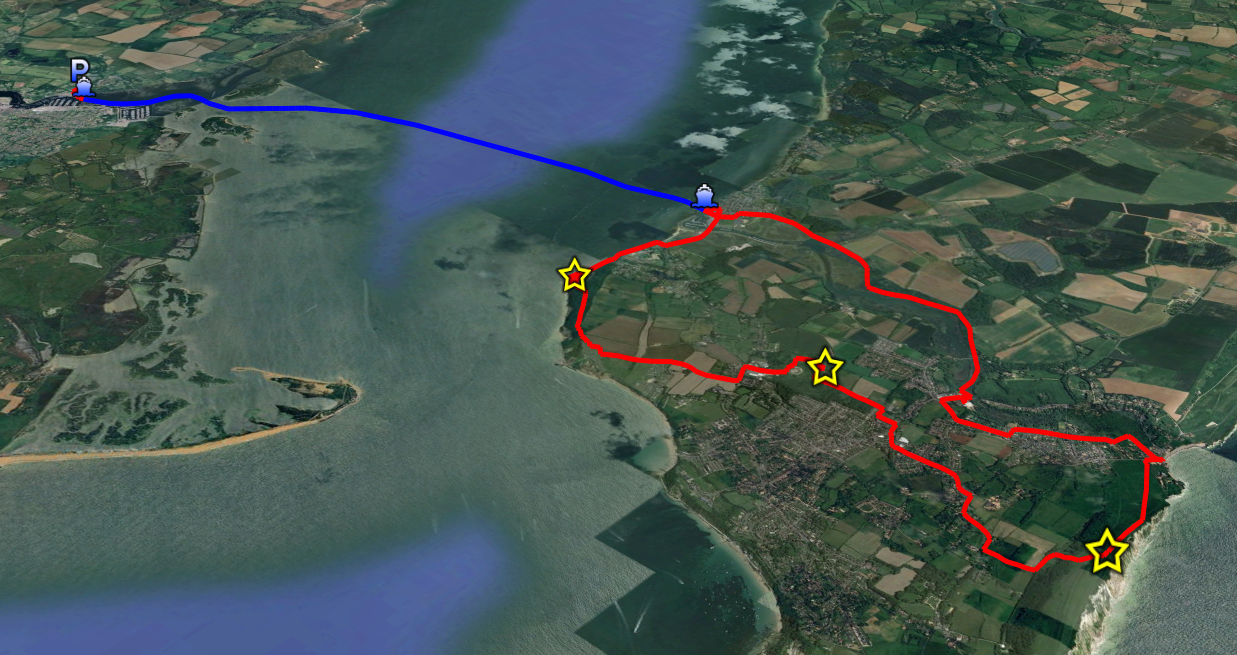 Route map for my 3-park rove
Route map for my 3-park rove
In total I walked just over 12 miles and just over 25k steps in around 8 hours, allowing plenty of time for radio along the way.
Many thanks to my all my contacts yesterday. See you on the air next time!
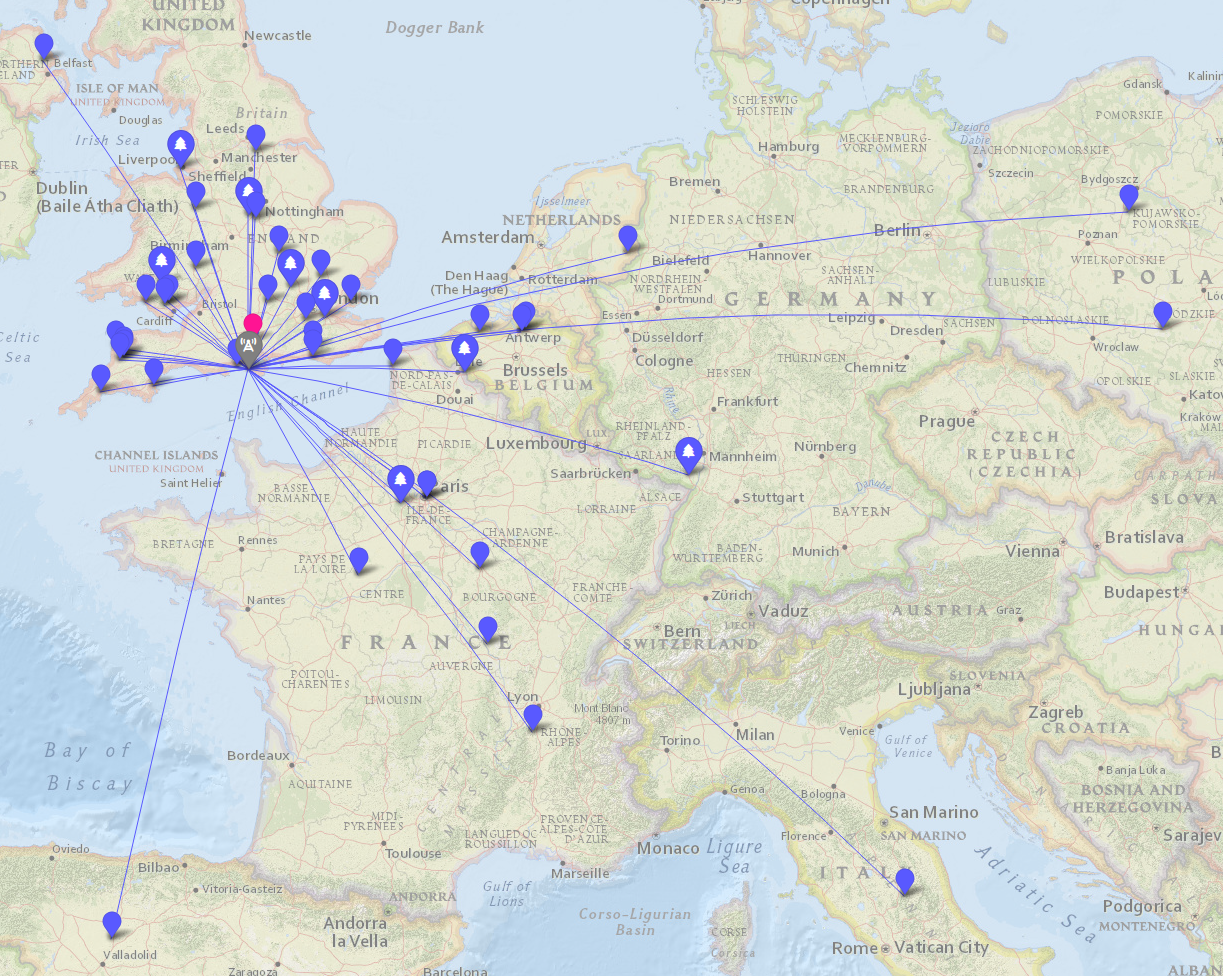
Comments